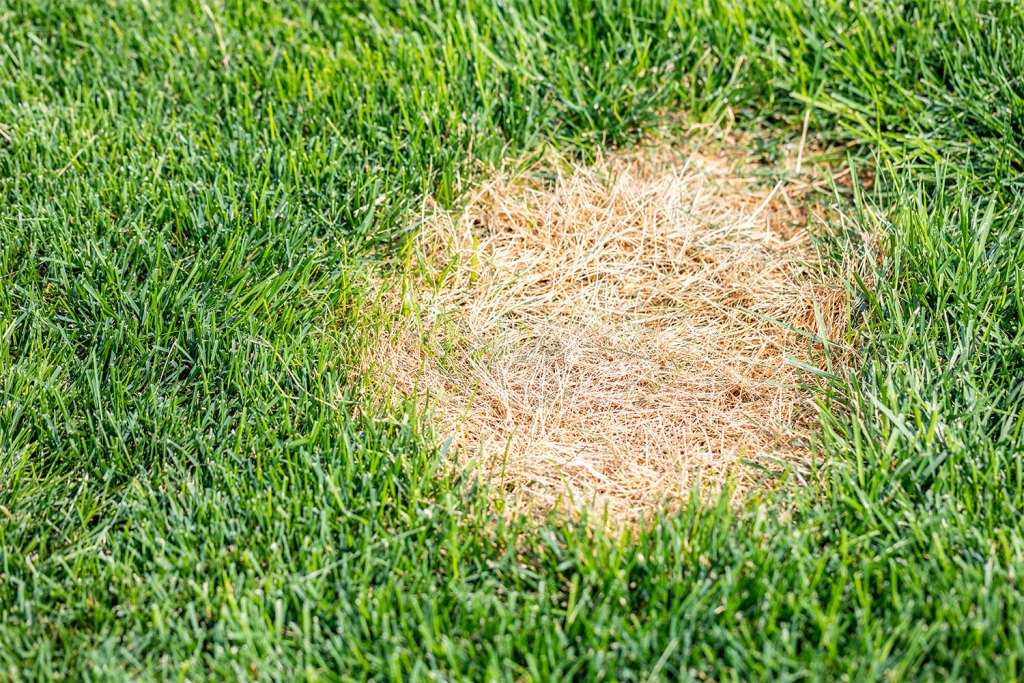
One day your lawn looks great. The next day, you're looking at your yard and asking yourself how to fix yellow spots in the grass. Yellow patches can be caused by several things, but thankfully most of them are easy to treat or prevent. This simple guide on how to fix yellow spots in grass will break down the causes, preventative steps, and treatments you need to know to keep your lawn healthy.
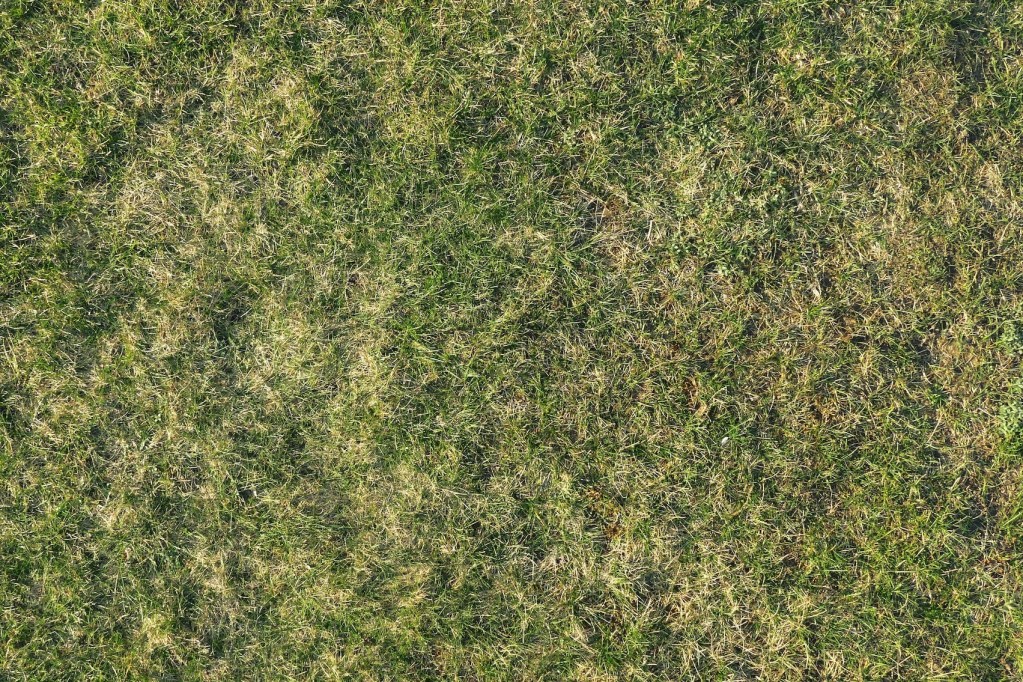
Causes of yellow spots in grass
In addition to dry weather conditions, here are some of the most common issues that homeowners battle to maintain a healthy yard.
- Excess nitrogen. Sometimes less is better. That’s true when it comes to fertilizing your lawn. Over fertilizing will produce too much nitrogen, which upsets the pH balance of the soil and burns the roots of your grass. This can cause it to turn yellow. Be sure to heavily water your lawn after applying fertilizer.
- Dog urine. As much as we love our four-legged best friends, their pee can do a number on the lawn! This is because their urine contains high levels of nitrogen. It’s probably best if you train Rover to go in another area, such as the garden.
- Pests and diseases. Take a close look at your grass to see if you notice any insects or pests near the roots. This could be the source of your problem. Your yellow grass could also be the result of some type of fungal disease.
- Heat and sunlight. Sometimes it’s just Mother Nature herself that’s the culprit. If your lawn receives direct sunlight all day long — in addition to extremely hot, dry weather – it can become stressed and dry out quickly. The result is a lawn that is now an eyesore.
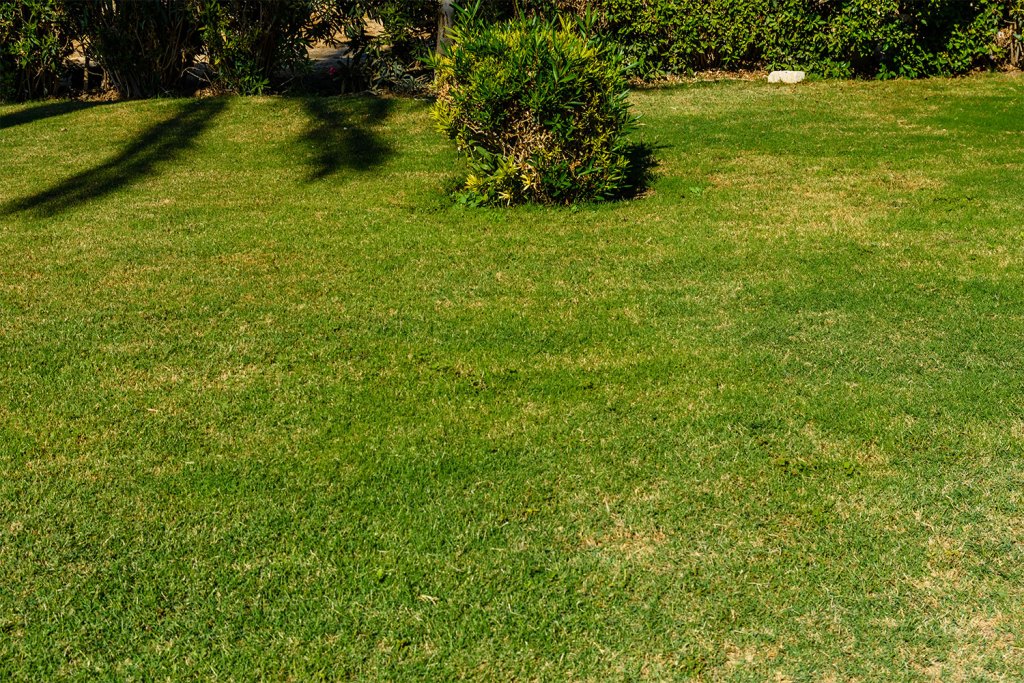
How to fix yellow spots on the lawn
Depending on the cause, there are several treatment options you can try. Here's what you need to know about how to fix yellow spots in grass:
Step 1: Make sure your trees allow plenty of sunlight to get to your lawn. Use pruners to prune or thin out your trees.
Step 2: Keep your lawnmower blades sharp and only cut your grass when it is dry. Also, check to make sure your blades are not cutting your lawn too low.
Step 3: Use dirt or sand to fill any low areas in your yard that could be potential breeding grounds for disease.
Step 4: Improve the drainage in your lawn by constructing a rain garden or installing a French drain.
Step 5: Use a lawn aerator on your yard so the soil can receive as much oxygen, water, and nutrients as it needs for healthy growth.
Step 6: Rake up any leaves or grass clippings immediately after cutting your lawn. These are great places for unwanted pests to make their homes.
Step 7: Water your lawn carefully.
If you water deeply (for about 10 minutes), you should not have to water your grass too frequently. A good indicator that your lawn needs water is cracks in the ground. That means water, water, water! The optimal time to water is between 6 a.m. and 10 a.m. before the hottest part of the day.
Step 8: If dog urine is the problem, you can try soaking the affected area with water and a bit of dish soap. This should help remove the staining substance from the grass.
Step 9: Perform a soil test to determine what nutrients are missing in your yard.
For example, if you see a large patch of clover, chances are your lawn is nitrogen deficient. If the grass near your sidewalk or driveway is yellow, you’re probably dealing with an iron deficiency. This is because concrete soaks up the iron in the soil around it.
Step 10: In extreme cases of yellow grass, it’s probably best to start over and simply reseed your lawn in the fall with cold-season grass seed.
Step 11: If none of these solutions works for you, call in a lawn care professional.
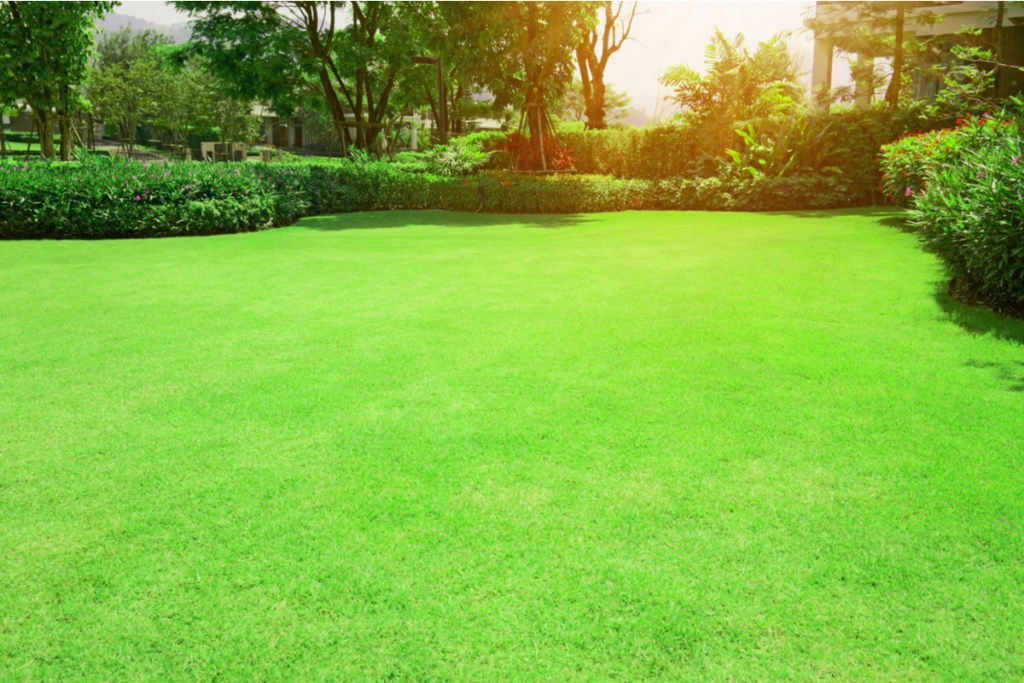
Maintaining a healthy lawn
Once you’ve eliminated your lawn’s yellow spots, it’s time to think about maintaining a yard that will be the envy of your neighbors. Here are some ways to keep your lawn looking its best.
Step 1: Feed your lawn regularly with organic fertilizers to keep it nourished and healthy. Just like with humans, a healthy lawn can fend off diseases and other maladies. Be sure to purchase the correct fertilizer for your soil and follow the recommendations listed on the bag.
Step 2: Remove weeds when you first notice them in the early spring and summer, before they develop deep roots that will make them more difficult to remove later.
Step 3: Continue to water your lawn deeply and infrequently, typically about 1 to 1.5 inches of water every week during the growing season. During hot and dry weather, increase your watering to 2 inches per week.
Step 4: Do a soil test every three to five years and amend the soil as necessary, depending on the soil test results.
Step 5: Aerate and de-thatch your lawn in the fall or spring. This will help prevent disease, pests, and compacted soil.
Step 6: Make sure you’re mowing your grass at the proper height. If your grass is too short, it becomes more prone to disease.
Step 7: Overseed bare spots with cool-season grass seed in the early spring or fall. Popular grass varieties include rye, fescue, or Kentucky bluegrass.
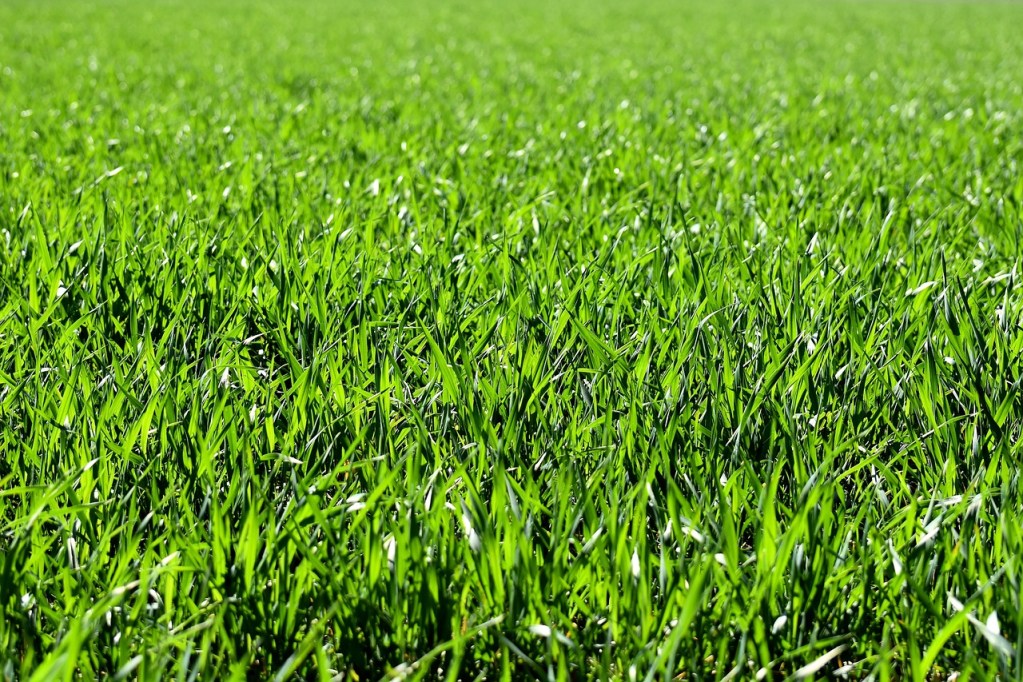
Can fungal infections cause yellow spots in your lawn?
Some yellow patches may be caused by fungal infections, which can unfortunately be more difficult to treat. Fungal infections such as lawn rust, ascochyta, and necrotic ring are caused by fungal spores in the soil, which typically become active in hot, wet weather. Here is how to identify and treat these infections:
- Lawn rust - yellow, orange, or red powdery substance in the grass, caused by the fungus puccina. It can weaken your lawn, making it more prone to pests and diseases, but otherwise is harmless. Treat it by applying high-nitrogen fertilizer. Bag your clippings when mowing the lawn to prevent reinfection.
- Ascochyta leaf blight - irregular patches of sandy-colored grass that appear quickly, caused by the fungus ascochyyta. It can be prevented through proper watering, as it is more commonly found in lawns that are watered frequently but shallowly. Asochyta affects the leaves, but not the roots, and lawns typically recover from an infection. Improving your lawns drainage through regular aeration and dethatching will help.
- Necrotic ring spot - ring shaped patches of dead grass, caused by the fungus Ophiosphaerella korrae. This fungus attacks the crowns of the grass, weakening and eventually killing them. It is most common in Kkentucky bluegrass, but can infect other cool-season grasses as well. It can spread quickly and survive in the soil for longer than some other fungi. It can be prevented through proper lawn watering and fertilization, as it spreads more easily through weak or unhealthy grass. Once it appears, it is best treated with fungicide.
Now that you know how to fix yellow spots in grass, you'll be able to keep your lawn beautiful and healthy. If you still have questions, talk to a lawn care expert in your area who can advise you on the correct grass care routine. They can help you put together a game plan so you can maintain a healthy lawn year round.

